Giedrius T. Burachas
Learning Invariant World State Representations with Predictive Coding
Jul 06, 2022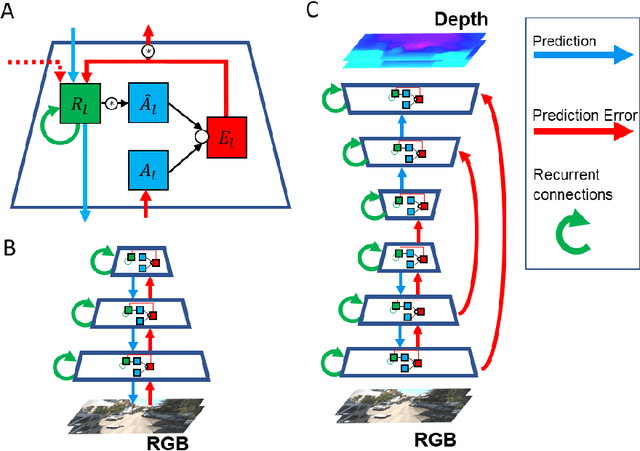


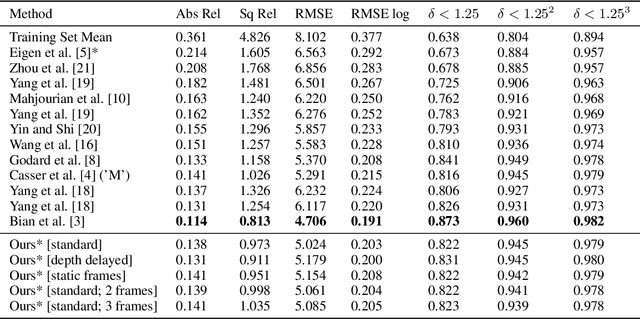
Abstract:Self-supervised learning methods overcome the key bottleneck for building more capable AI: limited availability of labeled data. However, one of the drawbacks of self-supervised architectures is that the representations that they learn are implicit and it is hard to extract meaningful information about the encoded world states, such as 3D structure of the visual scene encoded in a depth map. Moreover, in the visual domain such representations only rarely undergo evaluations that may be critical for downstream tasks, such as vision for autonomous cars. Herein, we propose a framework for evaluating visual representations for illumination invariance in the context of depth perception. We develop a new predictive coding-based architecture and a hybrid fully-supervised/self-supervised learning method. We propose a novel architecture that extends the predictive coding approach: PRedictive Lateral bottom-Up and top-Down Encoder-decoder Network (PreludeNet), which explicitly learns to infer and predict depth from video frames. In PreludeNet, the encoder's stack of predictive coding layers is trained in a self-supervised manner, while the predictive decoder is trained in a supervised manner to infer or predict the depth. We evaluate the robustness of our model on a new synthetic dataset, in which lighting conditions (such as overall illumination, and effect of shadows) can be be parametrically adjusted while keeping all other aspects of the world constant. PreludeNet achieves both competitive depth inference performance and next frame prediction accuracy. We also show how this new network architecture, coupled with the hybrid fully-supervised/self-supervised learning method, achieves balance between the said performance and invariance to changes in lighting. The proposed framework for evaluating visual representations can be extended to diverse task domains and invariance tests.
Improving Users' Mental Model with Attention-directed Counterfactual Edits
Oct 15, 2021


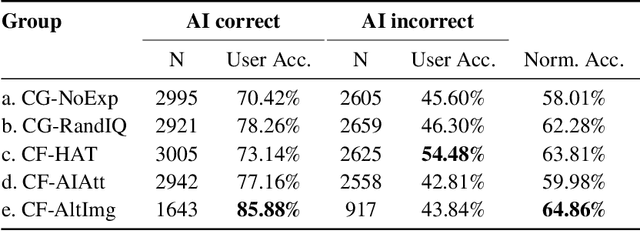
Abstract:In the domain of Visual Question Answering (VQA), studies have shown improvement in users' mental model of the VQA system when they are exposed to examples of how these systems answer certain Image-Question (IQ) pairs. In this work, we show that showing controlled counterfactual image-question examples are more effective at improving the mental model of users as compared to simply showing random examples. We compare a generative approach and a retrieval-based approach to show counterfactual examples. We use recent advances in generative adversarial networks (GANs) to generate counterfactual images by deleting and inpainting certain regions of interest in the image. We then expose users to changes in the VQA system's answer on those altered images. To select the region of interest for inpainting, we experiment with using both human-annotated attention maps and a fully automatic method that uses the VQA system's attention values. Finally, we test the user's mental model by asking them to predict the model's performance on a test counterfactual image. We note an overall improvement in users' accuracy to predict answer change when shown counterfactual explanations. While realistic retrieved counterfactuals obviously are the most effective at improving the mental model, we show that a generative approach can also be equally effective.
The Impact of Explanations on AI Competency Prediction in VQA
Jul 02, 2020

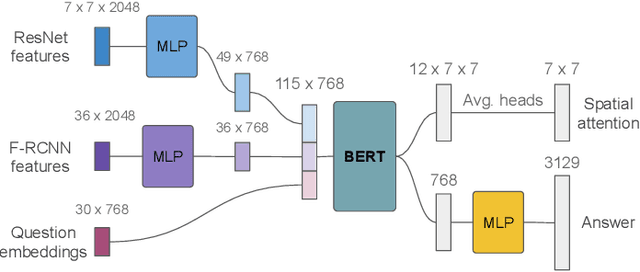
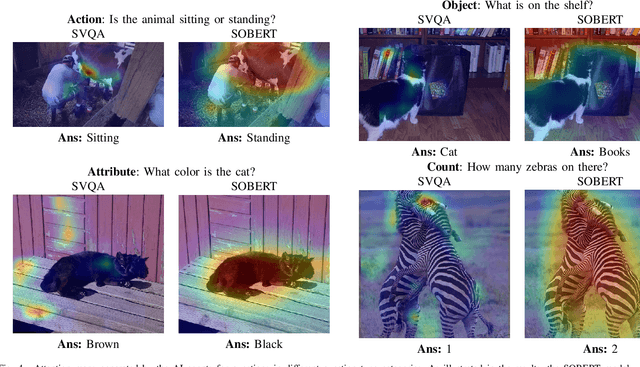
Abstract:Explainability is one of the key elements for building trust in AI systems. Among numerous attempts to make AI explainable, quantifying the effect of explanations remains a challenge in conducting human-AI collaborative tasks. Aside from the ability to predict the overall behavior of AI, in many applications, users need to understand an AI agent's competency in different aspects of the task domain. In this paper, we evaluate the impact of explanations on the user's mental model of AI agent competency within the task of visual question answering (VQA). We quantify users' understanding of competency, based on the correlation between the actual system performance and user rankings. We introduce an explainable VQA system that uses spatial and object features and is powered by the BERT language model. Each group of users sees only one kind of explanation to rank the competencies of the VQA model. The proposed model is evaluated through between-subject experiments to probe explanations' impact on the user's perception of competency. The comparison between two VQA models shows BERT based explanations and the use of object features improve the user's prediction of the model's competencies.
 Add to Chrome
Add to Chrome Add to Firefox
Add to Firefox Add to Edge
Add to Edge